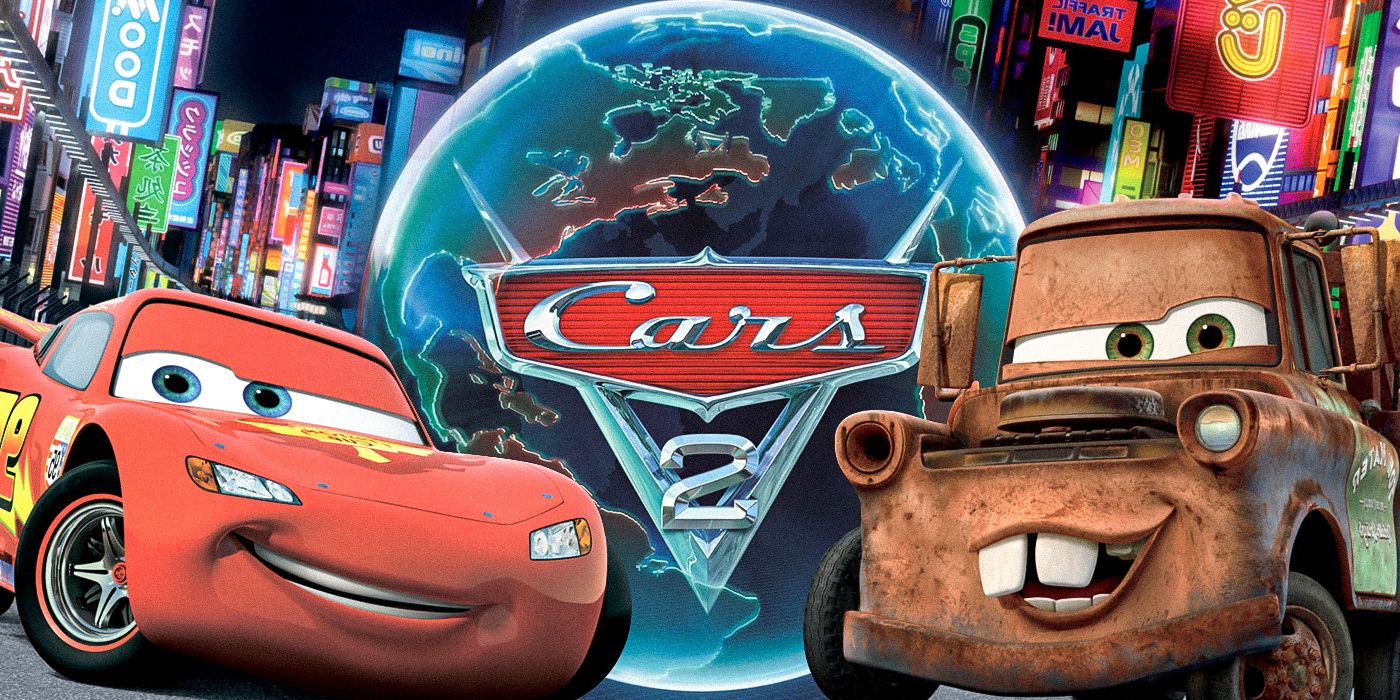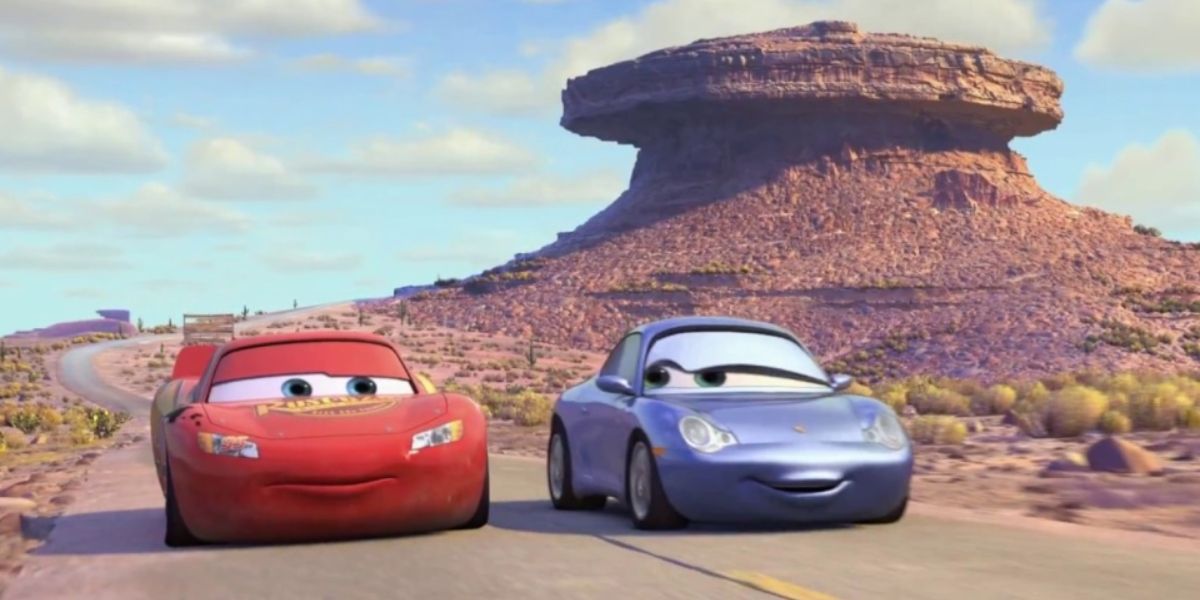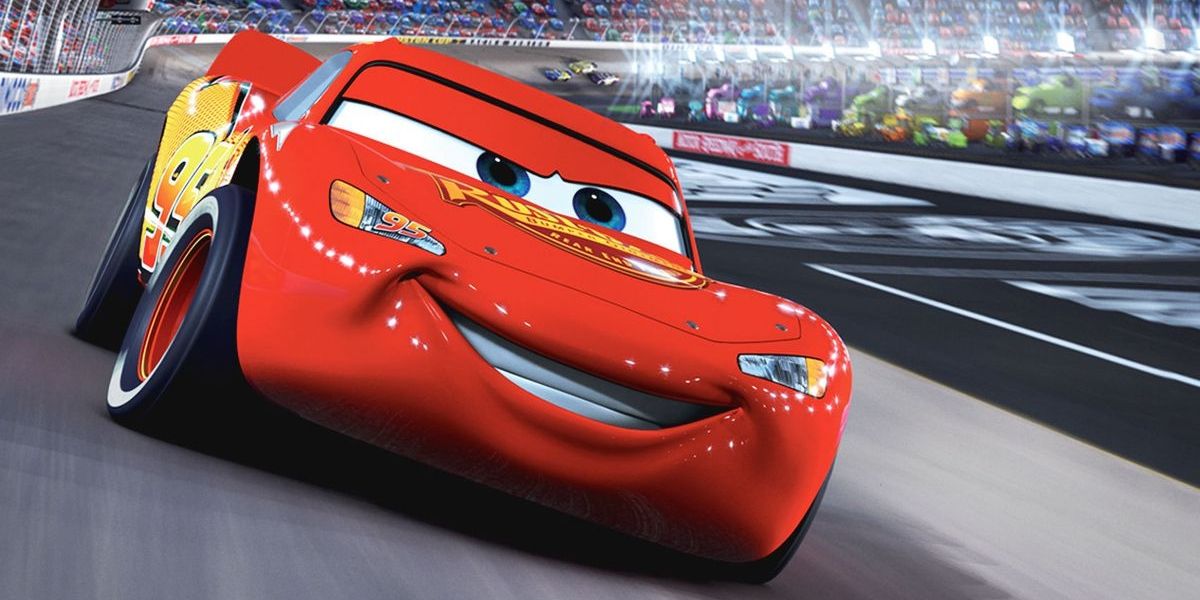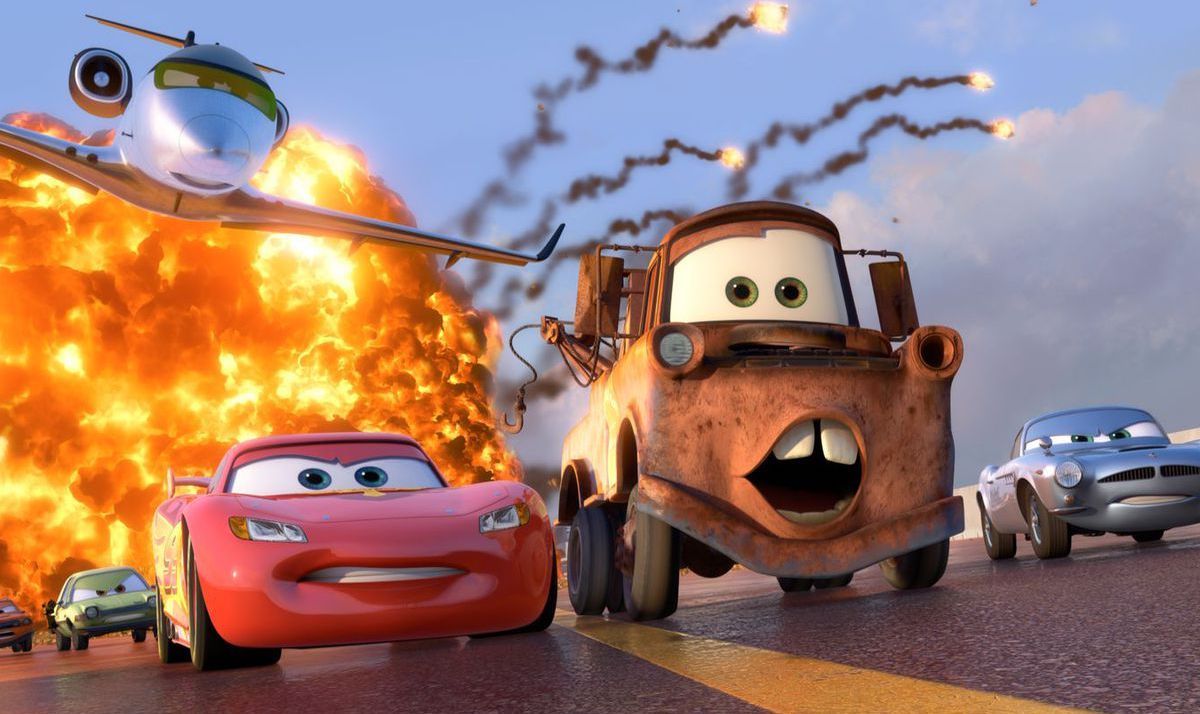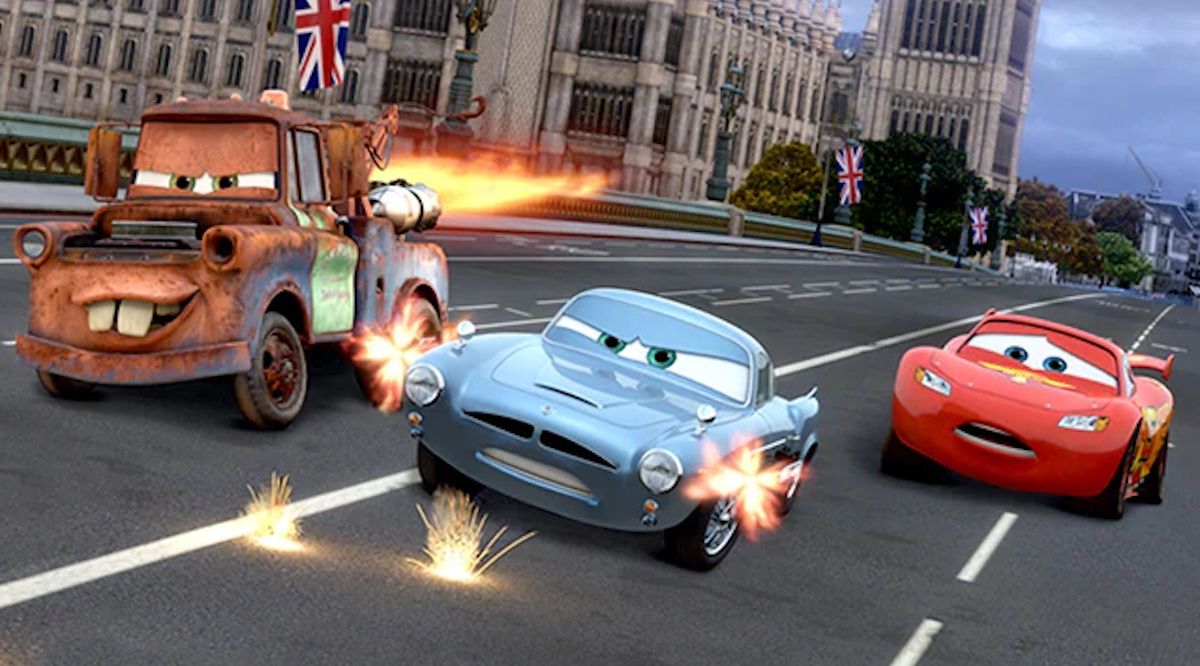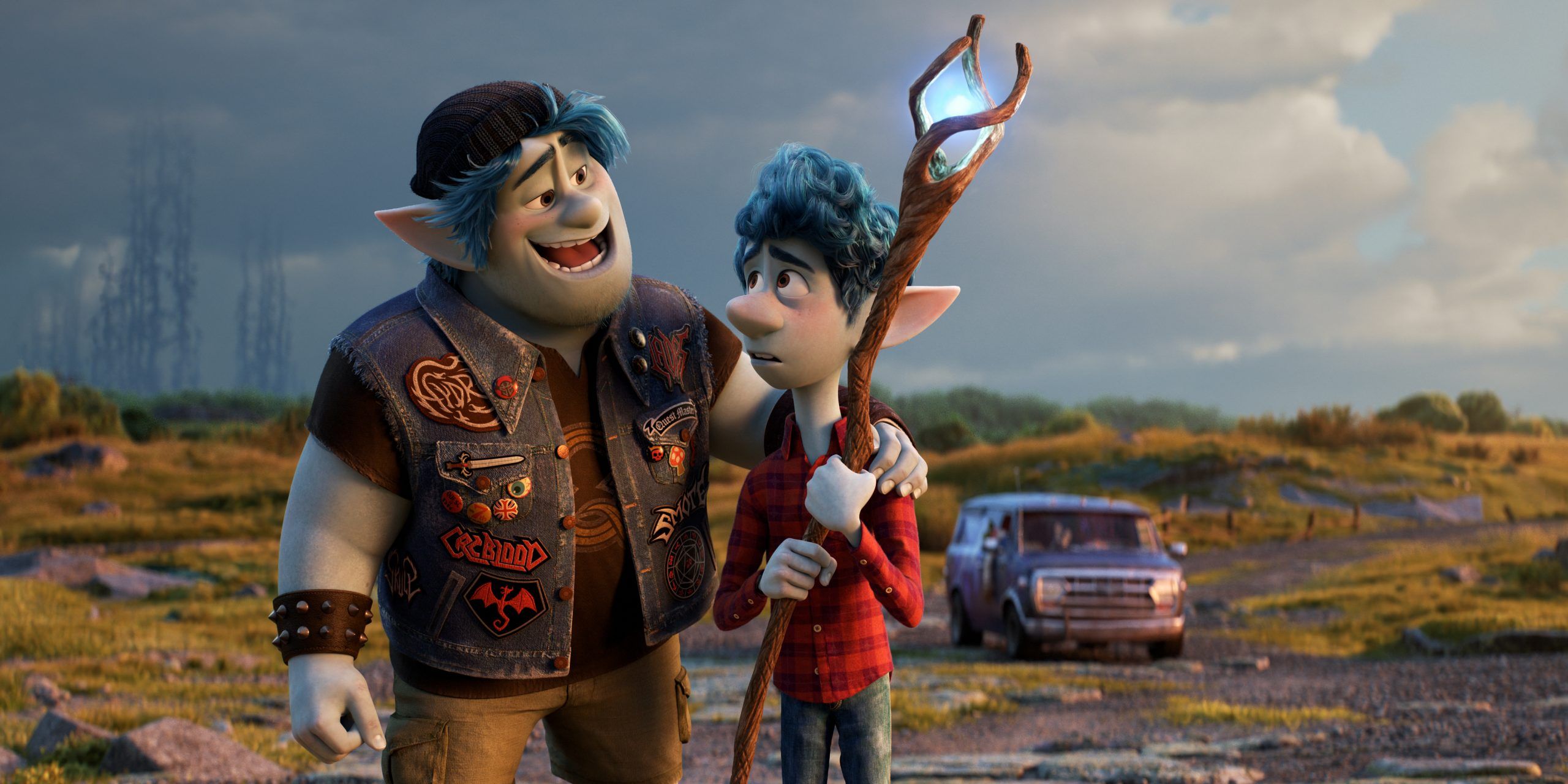Cars 2 is widely (and rightly) derided as the worst Pixar movie ever. It’s busy, frantic, nonsensical, and lacks heart. According to Rotten Tomatoes, it’s the worst-reviewed Pixar movie by a considerable margin – its rating of 39% is abysmal; the next-lowest Pixar movie’s rating, for Cars 3, is 70%. And while Cars 2 made slightly more money than stone-cold Pixar classics like Wall•E, Brave and Monsters, Inc., those numbers are not adjusted for inflation (Monsters, Inc. opened a full decade before Cars 2). Cars 2, no matter how you look at it, is a lemon.
But there were a number of unique circumstances that came together and caused Cars 2 to end up like it did. And thankfully, at Pixar today, nothing like that could ever happen again.
Cars began life in 1998, when, towards the end of production on A Bug’s Life, animator and writer Jørgen Klubien showed John Lasseter his script for a project he called The Yellow Car. At the time the story was an ugly duckling tale about an electric vehicle picked on in a world full of gas-guzzling cars. Lasseter loved the idea and quickly put it into development, but the studio got swamped with Toy Story 2 shortly after A Bug’s Life and several other projects that pushed what would eventually be Cars to the backburner. Originally scheduled for a Thanksgiving 2005 slot, it was moved to summer 2006. Press speculated it had to do with the fraying relationship between Pixar owner Steve Jobs and Disney CEO Michael Eisner, but Jobs said that he wanted all foreseeable Pixar movies to come out in the summer so the DVDs (then a lucrative part of the business) could be available for Christmas. The other thing available for Christmas? Everything else.
Almost from the word “go,” Cars, a sweet little movie Lasseter claimed was inspired by the breezy fantasy of Japanese master Hayao Miyazaki, was a merchandising juggernaut. The film itself had strong ties with the lucrative world of NASCAR racing, with many figures from the sport appearing in the film in cars-ized versions of themselves, including Richard Petty, Darrell Waltrip and Charlotte Motor Speedway owner Humpy Wheeler, making it an attractive property for children’s NASCAR-loving parents. And also, little kids love cars. Even without overt placement of the characters in Disney Parks or on Disney-owned television networks (again, given the tenuous relationship between Pixar and Disney), it managed to be a powerhouse. By 2011, just before the release of Cars 2, The Hollywood Reporter ran a story about how the merchandise brought in more than $2 billion globally every year and had just crossed the $8 billion line in total. A sequel to Cars wasn’t something that people were crying out for and their wasn’t a creative imperative to further explore the adventures of Lightning McQueen, Mater and the rest of the Radiator Springs gang. No – a sequel needed to happen because toys needed to be sold.
It also needed to happen for another reason: by the time Cars 2 was put into production, Disney had outright purchased Pixar for $7.4 billion. Pixar needed to prove its box office powers as much as its artistic ambitions, which meant sequels to some of its most popular films, including Monsters, Inc., Toy Story and, of course, Cars. Also, in 2007, Disney had announced an unprecedented move: they were going to attempt to “fix” Disney California Adventure, the second gate in Anaheim, next door to Disneyland. When Disney had purchased Pixar, they had installed John Lasseter as principal creative advisor to Walt Disney Imagineering, the division of the company responsible for the theme parks and cruise line. Originally, a space at this new version of DCA had been a Cars Land, themed to Route 66, with attractions based on The Love Bug, the classic 1950s car culture of California, and, of course, Pixar’s Cars. But Lasseter prompted the Imagineers to make the entire land centered around Cars. This new land would now open in 2012, around the same time (originally) that Cars 2 would hit theaters. The synergy was almost overwhelming.
But speedbumps were ahead. In 2010, word trickled out that the sequel was having massive story issues and that Lasseter was spending more time at Pixar than he was at Disney. Eventually it would be announced that Brad Lewis, an animation veteran who had produced Ratatouille for Pixar, was stepping down as the director of Cars 2. Just as he had done on Toy Story 2, Lasseter inserted himself as director. (Lewis would retain a co-director credit.) Pixar had replaced directors many times on projects midway through production, but this was the first time since Toy Story 2 that the big boss felt it necessary to assume control. Not a great sign about the project or anyone other filmmaker’s ability to take the wheels and avoid a crash (had to).
Lasseter positioned the move as a yearning to return to the daily task of creation, instead of a necessity brought on by what was deemed a creative freefall. ““I was so busy working on all those other things,” Lasseter told the Los Angeles Times. “I felt a little like I was losing touch with the artists who actually create all the films, and that’s something I cherished.” Ed Catmull, president of Disney and Pixar animation studios and the unapologetic architect of a colossal wage-fixing scandal, said in the same article: ““John wants to tell a story that has an impact on culture,” Catmull said. “He’s trying to create a world. When children want to play with the characters from the world, he takes a lot of pride in that. For him, this isn’t about the money, ‘cause he doesn’t get that money. It’s about the fact that he’s made this world, and he sees little kids there, and they’re wearing shoes made like cars. And when they hold these toys they’re their personal projections. He loves that.” Sure.
And while Lasseter later claimed that the film was inspired by the press tour for the first film, and his imagination running wild as he thought about what it would be like for clumsy tow truck Mater (voiced by Larry the Cable Guy) to navigate roadways around the world, it was clear that the story was largely directionless. Instead of being a tale suggesting that life is better when you slow down and savor it, like the original film, Cars 2 is a big, bombastic spy movie that puts Mater center stage and relegates everything charming about the first film to the story’s margins. And while working on the film, Lasseter’s attention was pulled in another direction, when his father, Paul Eual Lasseter, passed away during production. The elder Lasseter had worked for many years at Chevrolet dealerships in California.
It was the perfect storm of instability – a tail wagging the dog mentality of merchandise dictating filmmaking, a compromised creative vision, and a personal loss that took focus away from the production. Cars 2, which had its release date moved up to summer 2011, barreled towards opening. Press reported the Cars 2 budget had ballooned to more than $200 million. But then again, more than 300 new toys would be hitting shelves and a direct-to-video spin-off “from above the world of Cars” (Planes) would follow in 2013.
Cars 2 came out, it was indifferently received (and crucially failed to secure a Best Animated Feature Oscar nomination) and it sold a bunch of toys. When the Carsland section of the revived Disney California Adventure opened the following summer, it was rapturously received but had little to do with the sequel. Instead, it faithfully recreated the gentle town of Radiator Springs from the first movie. There wasn’t a spy in sight.
In November 2017, a few months after the release of the much-better (and Lasseter-free) Cars 3, it was announced that John Lasseter would take a leave of absence from the company after a number of sexual misconduct allegations were brought to life. (In a letter to staff, Lasseter admitted “missteps.”) In 2018 he would be gone completely. In his place, Inside Out director Pete Docter assumed the role of chief creative officer. And this new Pixar is a very different place.
For one, if a movie isn’t working, it isn’t shoved through production, like Cars 2 or The Good Dinosaur (released in 2015). Instead, the release calendar is more fluid. When it appeared that Incredibles 2 was in a better spot, story-wise, it was bumped up a year, which allowed Toy Story 4 more time to develop. Projects are now given time to breathe and mature, with an emphasis on the creative development process. Projects aren’t announced as early as they used to be (there’s a Pixar movie coming out in June of next year and they haven’t even told anybody what it is). The car(t) is never put before the horse.
And while merchandise is important, obviously, it isn’t the end-all, be-all. After the disappointing box office returns for Cars 3, a fourth film was quietly shelved. Pixar and Disney will still do more with the characters, for sure, but they wisely decided that the manpower and money required to make a fourth film just wasn’t worth the effort. Who knows – that might sell fewer Matchbox toys and pajama sets. But it’s the more creatively worthwhile decision – and that’s totally Pete Docter. Also, once the slate is actually revealed, it’ll be far more original than during the Lasseter regime. Sure, there are a few sequels in the works, but they are much different than you’d expect, and for the next few years, beginning with Onward earlier this spring, Pixar will be in an original film groove, hearkening back to its Ratatouille, WALL•E, Up trifecta of outside-the-box masterpieces. In the past few years, original Pixar marvels had to squeeze in between more commercially viable sequels. In the years to come, that ratio will be flipped.
After any kind of horrible accident, there are always protocols and procedures put into place to avoid another tragedy. This is what happened with Cars 2, a deadly pile-up of creative indifference, corporate greed, and personal loss. Pixar took it seriously. Even Cars 3, with its emphasis on character development and the simple joy of racing, felt like a throwback to classic sports movies of old. And with John Lasseter, whose position at the upper echelon of the Disney company made him more susceptible to company-mandated initiatives (and clearly gave his own ego an inflated sense of invincibility), gone, replaced by a free-spirited, imaginative genius, nothing like Cars 2 will ever happen again.

